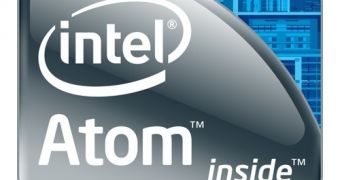Until less than a day ago, the extent of our knowledge regarding Intel's Centerton central processing units was that servers based on them would ship by the end of the year (2012).
Now, though, we have the specifications of the processors (CPU World), or three of them at least. The numbers we are seeing definitely seem to suggest that Intel is taking the idea of Atom-powered microservers seriously.
There was a time when Atom was synonymous with netbook processors and nothing else. Netbooks barely exist anymore, though, and the Medfield (for phones and slates) hasn't been getting any praise.
That Acer and ASUS have given up on the CPU brand altogether is no encouragement either.
Intel isn't scrapping the name though. Instead, it is making it branch out into the server segment, most notably those fields where systems need to use low power but still perform adequately.
The Centerton CPUs have two CPU cores each, as well as single-channel memory controllers, support for PCI Express 2.0, dedicated 32KB instruction (per core) and 24 KB data L1 cache memory (again, per core).
Three chips will be available, called Atom S1220, Atom S1240 and Atom S1260, all with hyper-threading (four logical cores rather than two). The differences between them are at the levels of thermal design power and clock speed.
The Atom S1220 and Atom S1240 have the same speed (1.6 GHz), but the former features a TDP of 8.1 Watts, while the latter is a 6.1 Watt unit. The third and last chip, Atom S1260, is a 2 GHz dual-core with a TDP of 8.5W.
All three have 8 GB DDR3-1066 MHz memory support (perhaps even 1,333 MHz), 1 MB L2 cache, four PCI Express controllers (up to 8 lanes), SPI, UART and LPC. No Platform and I/O controller chips though. The functionality in those will be provided by external discrete controllers.
A final mention goes to the Enhanced SpeedStep technology, which reduces core voltage and throttles frequency when possible, thus cutting power costs a great deal.
“Double cove” modules are one example of Centerton microservers. They will employ two CPUs each, plus SATA/USB/Ethernet controllers, memory and other circuits. The power efficiency of Enhanced SpeedStep will be a significant boon for them.

 14 DAY TRIAL //
14 DAY TRIAL //